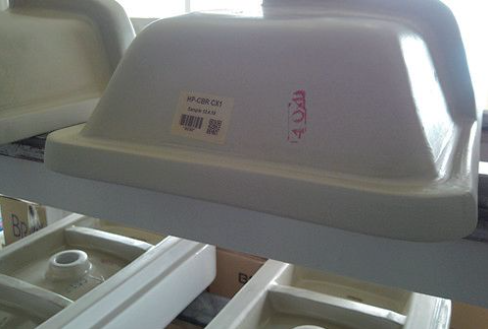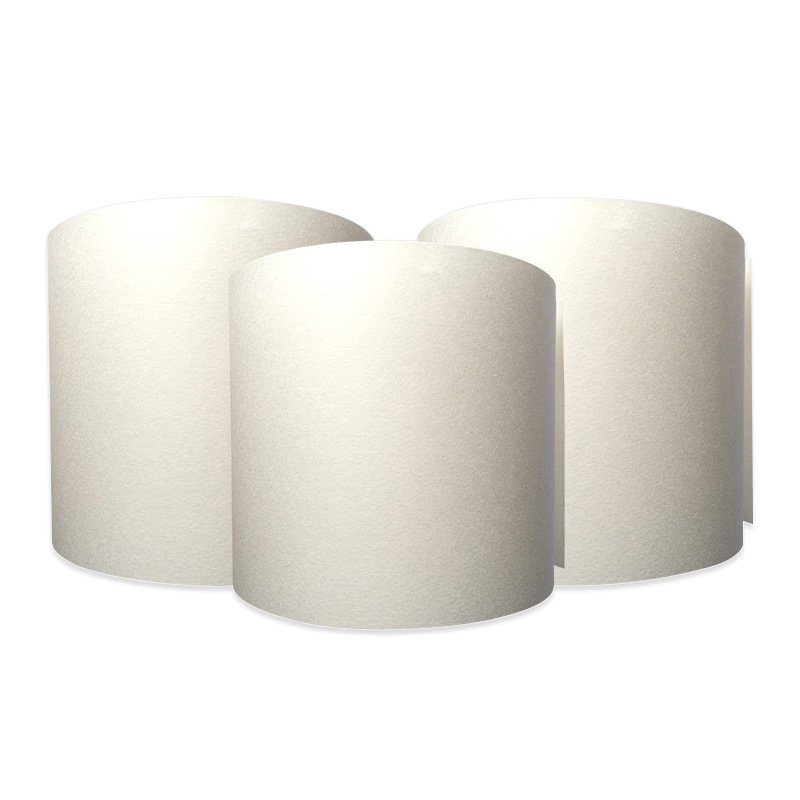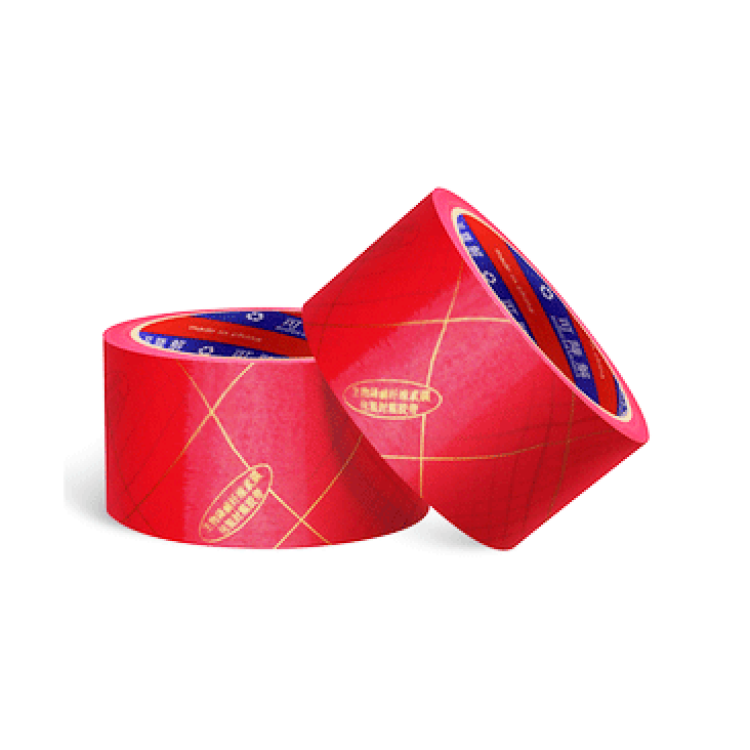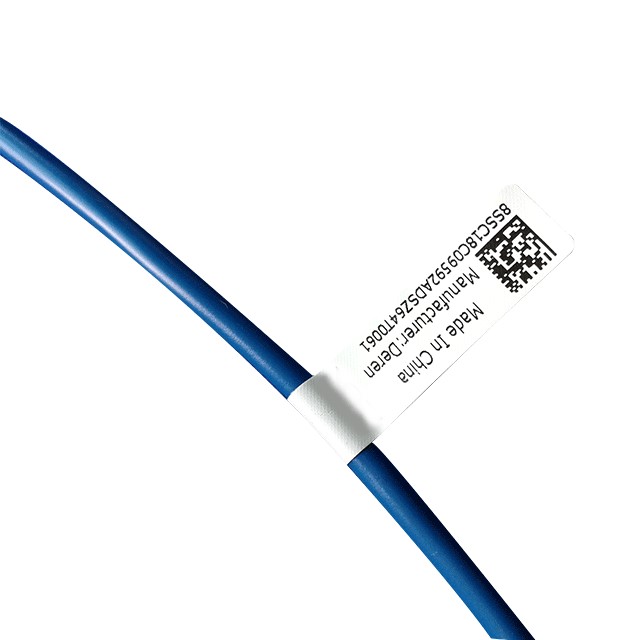
Heat transfer barcode paper
The lowest level in the evaluation grade of the curve parameters obtained from barcode detection (minimum edge ratio, decoding performance, stripe contrast, decoding ability, defect degree) is the grade of the curve. The levels of each parameter and the scanning reflectance curve are represented by letters A, B, CD, and F, corresponding to 4, 3, 2, 1, and 0 in the national standard, respectively. The national standard requires symbol levels not to be lower than 1.5/10/670
A-level barcode corresponds to symbol quality level: 4.0-3.5:
B-level barcode corresponds to symbol quality level: 3.4-2.5
C-level barcode corresponds to symbol quality level: 2.4-1.5:
D-level barcode corresponds to symbol quality level: 1.4-0.5
Heat transfer paper is a type of powder coated copperplate paper that has undergone special powder surface treatment and has a glossiness below 20 degrees. The paper is soft and elegant, with a matte effect, a refreshing and comfortable visual experience, and high non reflective opacity. It has excellent color saturation and vividness, and has excellent texture and ink absorption performance. It is suitable for heat transfer printing of various high-definition and high-density barcodes, and is suitable for most wax based and mixed based carbon tapes (recommended Ricoh B110A). It can easily print A-level barcodes

Heat Resistant Label
High temperature labels are made of polyimide film as the substrate and coated with special pressure-sensitive adhesive, which has good chemical resistance and wear resistance. They can withstand temperatures up to 320 ℃ and have a certain anti-corrosion effect on chemical substances such as flux, melting agent, and cleaning agent. They can maintain excellent performance in extremely harsh environments with high temperature and wear.
It is designed specifically for character or barcode labels on printed circuit boards, as it can withstand the erosion of soldering agents, melting agents, etc. encountered during the production of printed circuit boards. At present, there are mainly two thicknesses: 25um and 50um. The commonly used colors are black and white. High temperature resistant label stickers are widely used in SMT and peak processing of numerous electronic products, motherboards, corrosion products, mobile phones, and lithium batteries for high-temperature resistant labels.
In order to avoid printing failures of high-temperature labels caused by quality issues of the high-temperature materials themselves as much as possible, it is necessary to carefully inspect the appearance quality of the high-temperature materials before printing, so that defects that may cause printing quality problems can be detected in a timely manner before printing.
High temperature resistant labels are mostly used in special industrial environments, such as SMT circuit board mounting, MES, hot rolling steel in the steel industry, aluminum industry, pottery and other industries; As a carrier of barcodes and text for users who want to achieve visual identification, barcode automation management, and quality traceability in production processes, it not only needs to be resistant to high temperatures, but also needs to have characteristics such as chemical corrosion resistance, friction resistance, and super strong viscosity in special environments. Can be used for barcode printer heat transfer printing, trademark machine and rotary printing, etc

heat treatment label
Heat treatment labels are an essential part of modern manufacturing, primarily used to record and track the heat treatment history of products. These labels are usually affixed to products or components, containing key information such as heating temperature, holding time, and cooling rate to ensure that the product undergoes the correct heat treatment process, thereby guaranteeing the quality and performance of the product. They not only help ensure product quality, but also assist manufacturers in meeting regulatory requirements and improving production efficiency. In addition, heat treatment label barcodes, as a special form, are made of high-temperature resistant special materials that can tightly adhere to the surface of metal materials, achieving automated recording and rapid query, further improving production efficiency and quality control capabilities. Heat treatment labels play a crucial role in various industries such as metal processing, welding, casting, etc.
Heat treatment label barcode
Heat treatment label barcode is a widely used marking method in industries such as metal processing, welding, and casting. This marking method can record information such as heat treatment temperature, time, and process of metal materials for quality control and after-sales service during the production process. Heat treatment label barcodes are usually made of special materials that are resistant to high temperatures and can tightly adhere to the surface of metal materials, making them less prone to detachment and damage.
In modern metal processing production, heat treatment label barcodes are widely used in various fields. For example, in the production of automotive parts, heat treatment label barcodes can be used to record the production process of components such as axles, crankshafts, gears, etc., in order to trace product quality in after-sales maintenance services. In the foundry industry, heat treatment label barcodes are used to record the heat treatment process of castings for the purpose of analyzing and optimizing their performance.
Heat treated label barcodes can not only improve production efficiency and quality control capabilities, but also reduce human errors and losses. For example, in traditional heat treatment recording methods, workers need to manually record, which can easily lead to negligence, errors, or omissions. The heat treatment label barcode can achieve automated recording and fast query, reducing the risk of manual errors.
We offer comprehensive technical support, including free professional labeling solutions, advice on label materials and adhesive selection, as well as online/offline assistance from professional software and hardware engineers. Service email: andy@ownlikes.cn. In pre-sales, we leverage our extensive experience in specialty labeling projects to provide clients with the most suitable hardware solutions. Additionally, all our label barcode printers and scanners come with a three-year free warranty, demonstrating our confidence in our products.






This site is protected by reCAPTCHA and the Google Privacy Policy and Terms of Service apply.